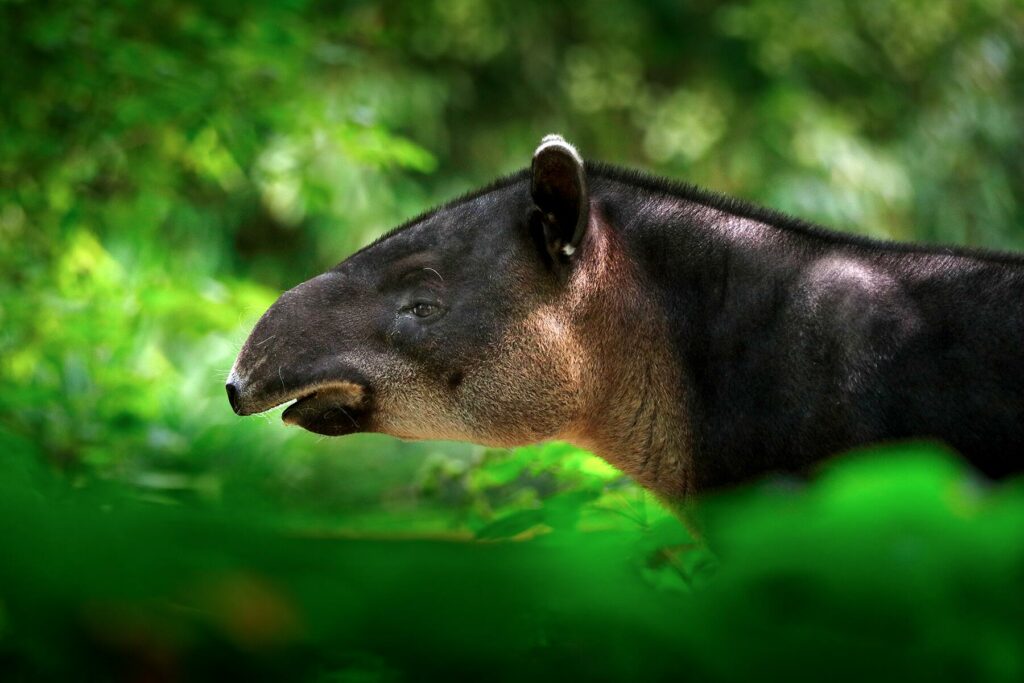Discovering the Extraordinary Fauna of the Yucatán Peninsula: A Comprehensive Exploration of the Coolest Animals

Introduction:
The Yucatán Peninsula, a jewel of biodiversity nestled in southeastern Mexico, is home to a captivating array of wildlife that spans lush rainforests, pristine coastal habitats, and ancient archaeological sites. From the vibrant coral reefs of the Caribbean Sea to the dense jungles and cenotes, the Yucatán’s diverse ecosystems harbor a fascinating collection of animals, each uniquely adapted to its environment. In this comprehensive exploration, we delve into the coolest animals that call the Yucatán home, shedding light on their adaptations, behaviors, and the importance of preserving their natural habitats.
- The Resilient Spider Monkey: A Canopy Acrobat
In the dense jungles of the Yucatán, the spider monkey (Ateles geoffroyi) reigns supreme as a charismatic and agile canopy dweller. Known for their long limbs, prehensile tails, and dexterous hands, these monkeys traverse the treetops with astonishing grace. Spider monkeys play a crucial role in the region’s ecosystems, dispersing seeds and contributing to the health of the lush rainforests they inhabit.
Despite facing threats from habitat loss and illegal pet trade, conservation efforts in the Yucatán aim to protect and preserve the habitats of these acrobatic primates, ensuring their continued existence in the wild.
- The Elusive Jaguar: Apex Predator of the Jungle
Hiding in the shadows of the Yucatán’s dense forests is the magnificent jaguar (Panthera onca), an apex predator that commands respect with its powerful build and distinctive rosette-patterned coat. Jaguars play a crucial role in regulating prey populations, contributing to the ecological balance of the region.
Conservation initiatives in the Yucatán focus on preserving and connecting jaguar habitats, mitigating human-wildlife conflict, and raising awareness about the importance of this elusive feline in maintaining the biodiversity of the region.
- Colorful Avian Wonders: Flamingos, Toucans, and More
The Yucatán Peninsula boasts a rich avian diversity, with vibrant and charismatic bird species adorning the skies and landscapes. The iconic Caribbean flamingo (Phoenicopterus ruber) graces the region’s coastal lagoons, presenting a spectacular display of pink hues. Toucans, with their distinctive bills, add a splash of color to the dense vegetation, while the resplendent quetzal enchants observers lucky enough to spot this elusive bird in the Yucatán’s protected reserves.
Birdwatching enthusiasts flock to the Yucatán to witness the diverse avifauna, and conservation efforts focus on preserving crucial habitats, implementing sustainable tourism practices, and raising awareness about the significance of bird conservation in the region.
- Underwater Marvels: Whale Sharks and Coral Reefs
Beneath the crystal-clear waters of the Caribbean Sea, the Yucatán Peninsula reveals an underwater paradise teeming with life. The world’s largest fish, the gentle giant known as the whale shark (Rhincodon typus), frequents the waters off the coast, offering a breathtaking spectacle for divers and snorkelers.
The Mesoamerican Barrier Reef, the second-largest coral reef system globally, embraces the Yucatán’s shores, hosting an incredible diversity of marine life. Coral reefs in the region provide critical habitats for countless species, including colorful fish, rays, and sea turtles.
Conservation efforts in the Yucatán focus on marine protected areas, sustainable tourism practices, and initiatives to combat coral bleaching caused by climate change, aiming to preserve the health and resilience of these vital underwater ecosystems.
- Cenote Dwellers: Unique Aquatic Life
The Yucatán’s landscape is punctuated by natural sinkholes known as cenotes, providing access to the region’s extensive underground river systems. Within these subterranean realms, unique aquatic life has evolved to thrive in the darkness. Blind cavefish, freshwater crustaceans, and albino catfish are among the fascinating creatures adapted to this subterranean world.
Cenotes, revered as sacred by the ancient Maya, are not only critical to the Yucatán’s hydrological system but also serve as crucial habitats for specialized species. Conservation efforts center around maintaining water quality, preventing pollution, and ensuring the sustainable use of these invaluable natural resources.
- Endearing Coatis: Forest Floor Explorers
Venturing into the Yucatán’s forests, one encounters the endearing coati (Nasua narica), a raccoon-like mammal with a long, flexible snout. Coatis are highly adaptable omnivores, foraging on the forest floor for fruits, insects, and small vertebrates. Their social behavior and playful antics make them a delightful sight for nature enthusiasts exploring the region’s national parks and reserves.
Conservation initiatives prioritize preserving the Yucatán’s terrestrial habitats, ensuring connectivity between protected areas, and addressing the threats posed by habitat fragmentation and human encroachment.
Conclusion:
The Yucatán Peninsula, with its diverse ecosystems and rich biodiversity, stands as a testament to the wonders of the natural world. From the vibrant jungles to the mesmerizing underwater realms, the region’s coolest animals captivate our imaginations and remind us of the interconnectedness of all life on Earth. As we marvel at the resilience and adaptability of the Yucatán’s wildlife, it becomes imperative to actively participate in and support conservation efforts, ensuring that these extraordinary creatures continue to thrive in their natural habitats for generations to come.




